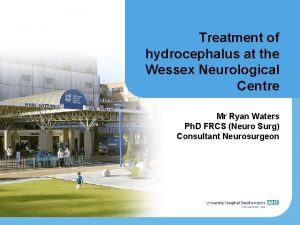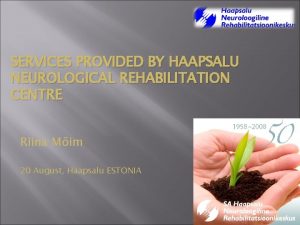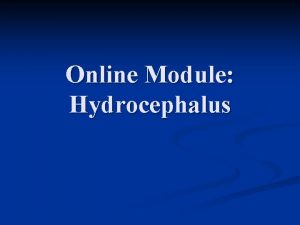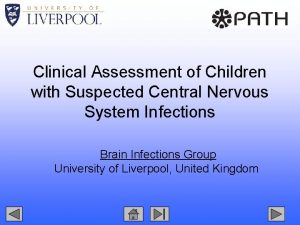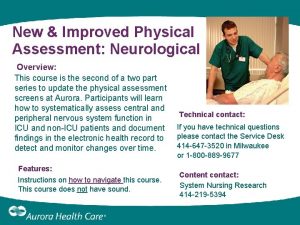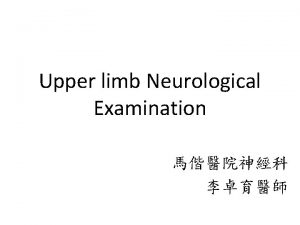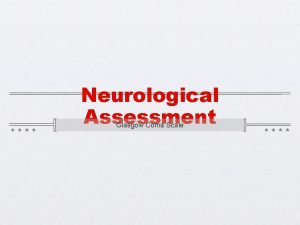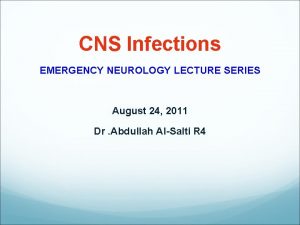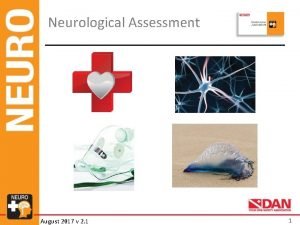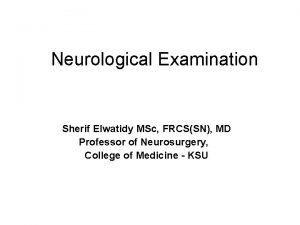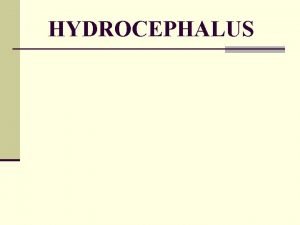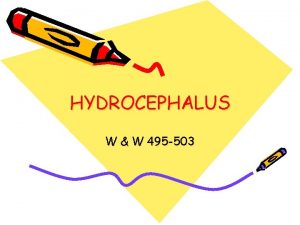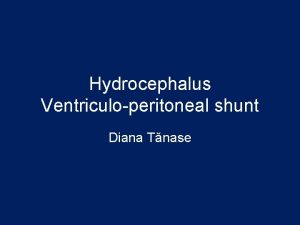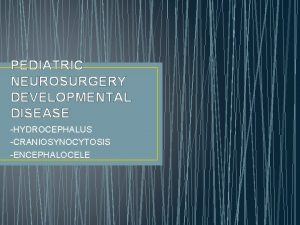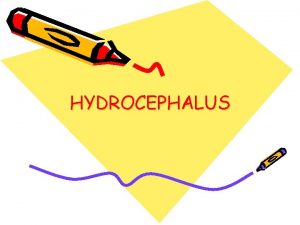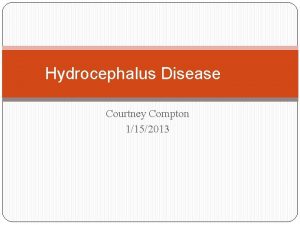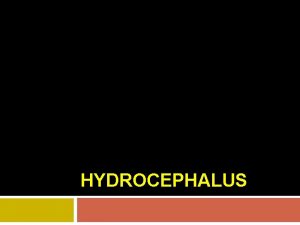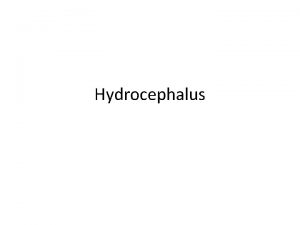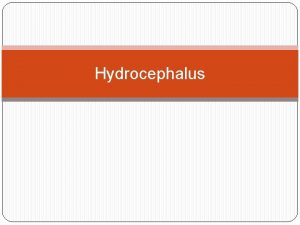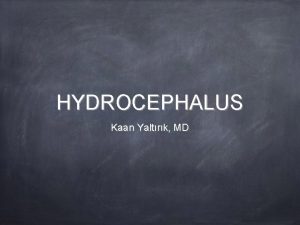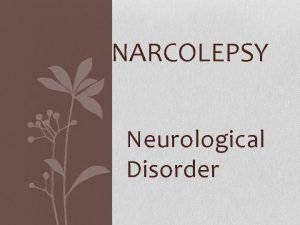Treatment of hydrocephalus at the Wessex Neurological Centre






















- Slides: 22

Treatment of hydrocephalus at the Wessex Neurological Centre Mr Ryan Waters Ph. D FRCS (Neuro Surg) Consultant Neurosurgeon

Philosophy • To provide the highest quality service – Outcomes – Patient experience • Collaborative approach – Network partnerships with; • Our referring Trusts • Oxford Children’s Hospital (Children’s Hospital Network) – Third largest unit in the UK

Southampton Staff • • Owen Sparrow Nijaguna Mathad Aabir Chakraborty Ryan Waters Christine Ward (Nurse practitioner) 13 Paediatric Neurosciences nurses Peter Gladwell (Surgical Practitioner)

Hydrocephalus • “An abnormal accumulation of cerebrospinal fluid (CSF) in the ventricles of the brain” • but not the whole story?

Classification • Non-communicating/obstructive – CSF flow obstruction – Aqueduct stenosis – Tumour – Haemorrhage • Communicating – Absorption problem – – Haemorrhage Infection Tumour Inflammation – ‘normal pressure hydrocephalus’ – IIH

Common causes of hydrocephalus

Causes Post head injury Tumour

Patient Assessment-History & Examination • Is the child Unwell? – Vomiting – Drowsiness – Headaches – School performance – Head circumference – Fontanelle – Bradycardia/apnoeas – Squint – Sunsetting

Treatment options • Treat the underlying cause • Temporary CSF drainage – Lumbar puncture – Ventricular tap – EVD • Endoscopic IIIrd ventriculostomy • Shunt – VP – VA – VPleural

ETV

Shunt

Shunt hardware

Proximal and Distal Tubing Selection • Antibiotic impregnated catheters – Bactiseal – Silverline • More than 20 studies on Bactiseal – Some evidence that Bactiseal reduces shunt infections – Need for a multicentre randomised controlled study - BASICS

Shunt Blockage Southampton Children's Hospital

Shunt Malfunction

Shunt Disconnection Southampton Children's Hospital

Southampton Children's Hospital

Diagnostic Shunt Tap • Aseptic Technique • Measure Opening Pressure • If Possible Remove Adequate Volume of CSF • Send Specimens to Chem, Micro & Culture NB Facilitated by System with Reservoir Southampton Children's Hospital

Normal Pressure Hydrocephalus • Generally seen in older adults • Communicating hydrocephalus • Clinical triad – Cognitive decline – Gait disturbance – Urinary incontinence • Ventriculomegaly on imaging

Investigation at WNC • MDT with neurology, neuropsychology, neurosurgery • Assessment – Neuropsychology – Walking test – CSF infusion test – CSF drainage

Treatment at WNC • VP shunt – Programmable valve – Risk of overdrainage and subdural formation

Idiopathic Intracranial Hypertension • Not ‘hydrocephalus’ but often treated with a shunt – A venous disorder • Multidisciplinary approach; neurology, neurosurgery and neuroradiology – Venography, manometry and stenting where possible – but shunts still used to control ICP
 Wessex neurological centre
Wessex neurological centre Haapsalu neurological rehabilitation centre
Haapsalu neurological rehabilitation centre Hydrocephalus greek
Hydrocephalus greek Wessex maternity academy
Wessex maternity academy Anglo saxon england map
Anglo saxon england map House of windsor family tree
House of windsor family tree 7 kingdoms of england
7 kingdoms of england Wessex deanery
Wessex deanery Wessex sales management simulation
Wessex sales management simulation Anglo saxon feudalism
Anglo saxon feudalism Sussex and wessex
Sussex and wessex Pains wessex epirb battery replacement
Pains wessex epirb battery replacement Muscle power neurological examination
Muscle power neurological examination Neurological assessment
Neurological assessment Solent nhs physiotherapy
Solent nhs physiotherapy Muscle power grading scale
Muscle power grading scale Neurological observations glasgow coma scale
Neurological observations glasgow coma scale Ao classification system
Ao classification system What is focal neurological signs
What is focal neurological signs Motor function neurological assessment
Motor function neurological assessment Papilloedema
Papilloedema Neurological based behavior
Neurological based behavior Contrasting acquisition
Contrasting acquisition
